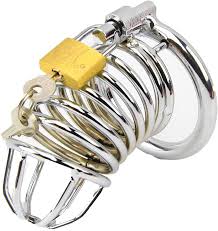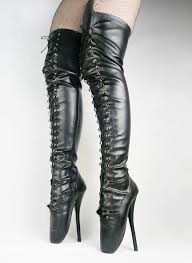
It’s soapbox time! Welcome to Hyde Park!
“Know thyself!” — Delphic maxim.
“Knowledge is Power”– Inscription on the New York Psychoanalytic Institute
“In the long run, we are all dead!” John Maynard Keynes
“Nothing is either good or bad but thinking makes it so!” Hamlet, Act II scene 2.
(For those of you who have not been following this blog forever, this essay builds on ideas articulated here at many points, but especially Everything You Know is Wrong! and The Folly of Self Reports)
I hear a lot these days about how kink might be ‘healing’.
It might be.
Then again…

But you will notice that lots of sex is not healing. Andrew Cuomo is experiencing that right now. Revealing that you find it arousing to coerce your workmates into sexual conversations with your political position is not healing to your career these days. Millions of sexual trauma survivors struggle with the fact that coercion isn’t healing. It certainly can’t be assumed that all manner of sex is healing in all contexts, even though hundreds of millions of people find it restorative and relaxing which certainly sounds lovely.
Medicine is intended to be healing. In my case it has been life sustaining, but it ain’t necessarily so. My friend who fasted for six hours in prep for a scan and who was told she was the victim of a scheduling error didn’t find the experience healing in the least. But it is not just expense and administrative error that interfere with healing in medicine. Anaphylactic shock is certainly unhealthy, yet a big enough risk of my COVID vaccination that everyone in my county is asked to wait around 15 minutes after their vaccination to preclude the very unlikely event that their protective shot might kill them!
Psychotherapy is intended as healing. It very often is, and much in how we do therapy is explicitly intended to be healing. But you have seen people who have had years of therapy who do things that seem less than fully healed. We all have favorite examples. Healing ever happens, but there is a great deal that the healing metaphor fails to accurately predict or describe. At best, only 75-80% of psychotherapy patients get better in the bulk of evaluation studies, and many of those leave satisfied, but without all of their symptoms fully relieved. Anyone unclear about this need only look up the work of Hans Eysenk. Those of you who actually followed the link to “Everything You Know is Wrong’ will find a classic case study of bias in social science in Eysenk’s work on ‘cancer personality, detailed in the Wikipedia thumbnail!
On top of all my privileges which I brought to cancer treatment, I took away yet another by being a very challenging but successful case. My cancer treatment left a very expensive legacy of iatrogenic costs, but given the poor odds of my survival, those modest but significant disabilities pale in comparison with death, the ultimate diagnosis of ill-health. I can only imagine oncologists who see ninety percent of cases like mine die brighten when they read my chart and prepare to enter my consulting room. I remind them of why they get up for work every morning. I am ‘healing’ for them even as we consult to mitigate the consequences of my healing that are hard to live with. No wonder they all seem glad to see me!
‘Healing’ is a social construction designed to give hope, and help us dispose of uncomfortable ambiguities like these. As a social constructionist — hopefully with your kind permission as a reader — I use my time on the Hyde Park soapbox to sadistically deconstruct that ideal. Healing, my friends, is not all it’s cracked up to be. Truth is what you need, but nevermind!
Good sex, kinky or not, can certainly be gratifying and thrilling and silly and fun. Stripping away some of the heteronormative idealization with the entry of gay, trans, and kinky voices into the discourse has certainly broadened our understanding of what sex is. This is far from brand new! Sigmund Freud started that 135 years ago. So I am distrustful of discourse that says kink isn’t sex. Looked at this way, a lot of sex isn’t really all that sexy. We are way beyond the idea that all sex is reproductive, or coital, or even involves intromission, or all of those good biomechanics that Masters and Johnson were at pains to point out. So your two hour Shibari suspension in which neither you nor your rigger had an orgasm but you were transported to a blissful timeless space and he made a terrific promotional video is still probably sex in my book. Even if you prefer to do orgasms some other time and in a completely different context. If you drew a paycheck for it, most would call it sex work whether or not you would have done it for free. In kink, even sexual denial serves sexual purposes!
If you can tolerate my broad and rather ambiguous definition of sex and my nasty deconstruction of healing, then perhaps you will better understand my challenge to the construction that kink might be healing.

I can only add that scientific evidence that psychotherapy is healing is somewhat ragged and ambiguous. Given that we have professionalized psychotherapy, medicalized it, and expect people to pay good money for it, it makes sense that we should demand some proof psychotherapy is healing. And science has provided quite a lot of evidence that psychotherapy is correlated with things we intellectually associate with healing, even if we are short of agreement on an what a good operational definition of healing ought to be.
Science has not done this evaluation for kink, or even very much for sex. Beverly Whipple et al have a chapter in her book “The Science of Orgasm” of the health correlates of sexual activity. They are modest but real. Stigma, professional priorities, privacy and the rights of human subjects, problems of agreeing what sex is, prudishness, and romanticism have all posed significant obstacles to such a quixotic project for kink, so it is unsurprising to no one that there is a persistent paucity of scientific evidence that kink is healing. Therefore there is little counterweight to claims that it is.
But I would push on into the vacuum provided by this lack of evidence with the claim that it is sex negative bias to assert that kink needs the function of healing to be defensible activity in the first place! As DJ Williams points out, kink has many of the positive values of other forms ow serious leisure.

Likewise, it is pure folly to think that Wartenberg wheels, duct tape, nipple clamps, latex hoods, diapers, furry costumes, or ballet boots that lace up all the way to your thighs are intrinsically healing. All the sexy fetishistic trappings of kink that rivet our attention are not intrinsically healing. Just between you and me, many of them were chosen because their associations are scary and as far from healing as our imaginations stray. Aren’t ballet boots sexy because they are nearly impossible to walk in? If good health means good function, ballet boots are pathologically crippling. If Godzilla is attacking the city, no one says “Wait! I have to lace these ballet boots on before we run for our lives!” Indeed in response to the first draft of this essay, one of my more thoughtful respondents, Cyndi Darnell, offered, “the beautiful boots might be soothing, permission granting, liberating, validating which contribute to a sense of well-being.” Surely these feelings are correlates of health, although I pause at the construction that such torturously constraining boots are intrinsically ‘liberating.’ One must work to make them so. To make Cyndi’s construction work, an individual must do a great deal of shadow work to get to that place of liberation. In the meantime, the boots populate the runways and our extreme imaginations, not the athletic markets. Even professional ballerinas do not train in them.` Yet we agree that they are symbols of power! For a deeper dive on this See https://www.amazon.com/Fetish-Fashion-Power-Valerie-Steele/dp/0195115791 [See the first Comment by the author.]
If and when there is healing in kink, I assert that it resides in the context. It is often absent or invisible on Porn Hub, and our favorite works of kink erotica. It inheres instead in consent, communication, and acceptance, the not very glamorous side of ‘the life.’ Much of this instruction you could get from a psychologist or a good business trainer as easily as from a good dominatrix.
If, in kink, you can agree to anything and keep your agreement and trust others to do the same; if you can suspend your judgment about yourself and your partner(s) and accept their fraught relationship with the things they are most afraid of judgement about outside the bedroom or dungeon, then kink might be healing. If you can keep communicating long enough to hammer out relationships that cannot just be assumed into existence on the basis of stereotypes, then kinky criteria can form healthier relationships than vanilla assumptions routinely provide. The inevitability of non-consensual powerplays, slut shaming, rigid gender expectations, and human inadequacies that populate conventional daily life create the opportunities for kink to be healing. And, if they abound in daily life, how much healing can we expect kink to do?
Janet Hardy has suggested, quite properly, I think, that kink can provide training in handling intense stimulation. This is a somewhat extreme but useful form of teaching affect tolerance, a very common healing goal in psychotherapy that never goes anywhere near the Dance of Souls! Brad Sagarin’s work at this event at South by Southwest Leatherfest is a seminal contribution to exploring the neurophysiology of sensation play. Extreme Rituals in a BDSM Context: Altered States of Consciousness in an Extreme Ritual It is part of what Katherine Zitterbart is discussing in kink preparing her with skills for enduring chemotherapy for breast cancer.
Hardy also suggests that Dossie Easton’s notion that shadow play is inherently therapeutic. As a therapist, I am neutral about this as a principle, but have seen persuasive specific instances. Certainly thoughtful kinksters like the late Bill Henkin and Sybil Holiday have presented persuasively on this. The general argument is that expressing one’s dark side is a crucial way of knowing it. Usually people making this argument refer to Jungian and Freudian psychoanalytic theories which refer to the unconscious. While the Freudian and Jungian ideas of the unconscious are quite different, and by training and personal experience, I am greatly biased towards the Freudian view, there is a long therapeutic discourse that is quite distrustful of the idea that acting on unconscious ideas is crucial to understanding them. A central tenet of Freudian theory is that understanding and articulating one’s darkness is the key to not acting upon it! But part of that same discourse has been acutely stigmatizing of kink, and given the history pathologizing kink behaviors, the professional literature cannot be accepted uncritically. Often therapeutic arts have been dragooned into acting as agents of social control, a problem that still plagues the modern DSM-5 in which psychiatry first formally recognized that consensual sexual variations were not inherently pathological.
It is hard to know how the term ‘healing’ applies when the DSM-5 characterizes nonconsensual paraphilias like pediophilia and sexual sadism which do not trouble the client but in which other people are harmed. These are criminal conduct, not diseases, especially given that problems abound in identifying their common etiologies and treatments. I will examine the criticisms of the paraphilia diagnosis further when I summarize the important works of Charles Moser, who has a considerable and persuasive body of work that has led to its moderation, but not removal, of the paraphilia diagnosis from the DSM-5.
Closely related to this question of kink as ‘healing’ is the work of Emily Prior, DJ Williams and Richard Sprott characterizing kink as ‘serious leisure’ analogous to rock climbing. This analogy applies best to the vanguard of people involved in the out and intellectually active dimension of the kink community such as are likely to be reading this essay. It is much less clear how it applies to the majority of kinksters who act on their fantasies without joining an online community, social group, or attending kink events, or learning from the extensive kink educational discourse. But it is certainly true that the kink intelligentsia learns techniques for playing more safely and effectively and it is easy to imagine that many of them know their limits and explore their preferences more deeply from participation in kink activities within their communities in a manner much like serious climbers do. The element of testing oneself, knowing one limits, managing risks, and self enhancement and discovery are very similar. So concerns that acting on one’s impulses is a substitute for understanding them which have historically characterized the therapeutic community cannot be taken uncritically any more than self-reported data can.
DJ has noted that kink has other characteristics in common with serious leisure, including being freely and autonomously chosen, and being intrinsically motivated. I agree that those are positives of kink, but for either psychotherapy, or serious leisure, or idle leisure, or kink to be ‘therapeutic’, we must specify a disease for which they might be the cure. Having been historically linked to pathology, and it having taken about 130 years to officially debunk this, I am very charry of any justification for kink that resorts to curing disease. Indeed, I agree with DJ and others who think those shared criteria are quite sufficient justification for kink, but merely a good beginning for justifying calling a allied medical procedure ‘therapeutic’. I would add that becoming socialized to any community can be a wellspring of social health benefits, and the kink communities offer this in sufficient abundance that it is a genuine public health concern that when kink groups stopped face-to-face meetings due to COVID-19, groups needed to migrate online to maintain social support for their more isolated and marginalized members. The stress of COVID-19 is strongly associated with increases in domestic violence and other crimes, demonstrating the stressful effects of loss of autonomy, loss of of agency, and decreased social support for the general population. It is not unfair to imagine these are exaggerated for socially marginalized and stigmatized populations. https://elephantinthehottub.com/2020/03/sex-in-the-time-of-corona
One of the reasons kink is decades ahead of the mundane world’s operationalization of consent is that our daily lives in the larger social world do not explicitly function on consent. Much of our behavior is incentivized to the point of coercion. Much behavior is not accepted. Judgement is implicit. Ostracism is common and real. Often we cannot imagine freedom from judgement because we are active participants in judging ourselves and others in our attempts to negotiate social life. And nooses are left in classrooms and garages, slurs scratched on bathroom walls, tags stake out territory on walls and railway cars. Lots of things are NSFW. FB bans posts with sex in the title of educational posts while selling ads for PDE-5 inhibitors that emphasize how ‘hard’ you’ll get! Credit cards won’t process your purchase from the ‘wrong’ sites. What boundaries you can enforce is a function of your privilege. For many, our closest relationships are too precious to risk honestly asking for what we desire. Stigma is a social disease, albeit with very real effects on individuals, but it calls into question the construction of the term ‘healing; the dis-ease is societal. Rock climbers may face dangers that cause potential partners to recoil in fear, but no one blocks their websites or declares rock climbing a public health crisis.
You will note that many of the ground rules of good psychotherapy: informed consent, honesty, being freely and autonomously chosen, suspension of judgment, learning about self and others, intimacy, and intense communication are the crucial ingredients of effective kinky relationships. So the question of whether kink might be healing might be the starting point of a sales job to get you to sign up for something you aren’t ready for. Or it might just be true. The Science of BDSM team at NIU isin the process of investigating the physiology that kinksters are activating in role play and intense stimulation. This is a far cry from proving kink is a form of therapy, but there are individuals who claim to use kink for pain and emotional management. I have no doubt that these are honest and thoughtful accounts, but anecdotes suggest that a thing is possible even if they fall well short of scientific proof.
In the meantime, be aware that the famous PDE-5 inhibitors used to treat erectile dysfunction have well documented physiological mechanisms and have passed high scientific hurdles in Western medical societies that heavily regulate medicines. Yet they only work about 40% of the time, and the vast majority of prescriptions are not renewed.
Be advised, therapy is hard work…
And O’s journey into sublime submission might be easier to write about than to actually do. Kinkyfolk are not readily dissuaded by the notion that kink might be hard sometimes. If kink is healing sometimes for some people, perhaps their choices are a little less coerced in kink than in mundane living despite all the colorful trappings of power exchange.
© Russell J Stambaugh, March, 2021, Ann Arbor MI, All rights reserved